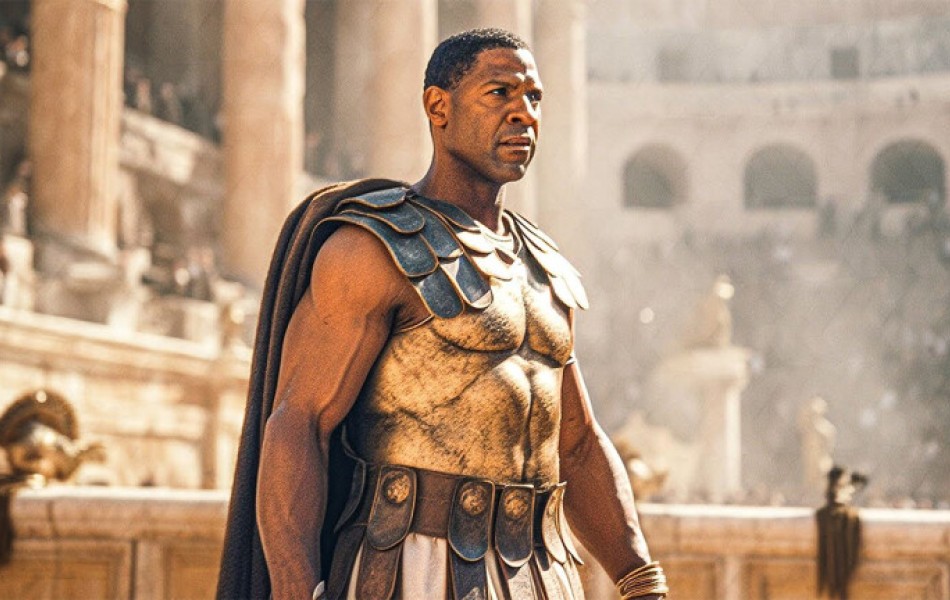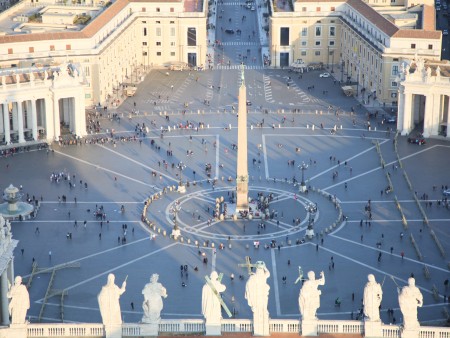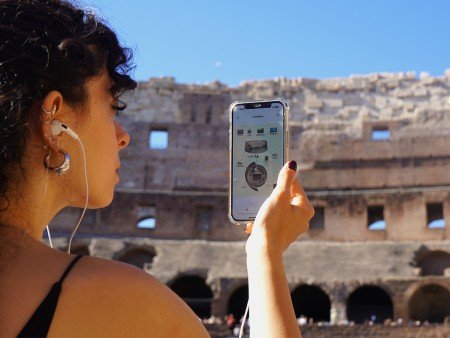The Gladiator II: At my signal, unleash hell. Fiction outweighs facts
Were naval battles, exotic animals, sharks, monkeys, and rhinos seen in the Colosseum? Were the emperors black? Many of these facts are false, lacking history

19 December 2024
Rome News"At my signal, unleash hell". Tear everything down, even history itself
The film ‘Gladiator II’ was released in November in cinemas, 24 years after the 2000 cult film ‘The Gladiator’ by director Ridley Scott, a film that made immortal the character of Maximus Decimus Meridius, a hypothetical Roman general betrayed by the emperor Commodus, of whom there is no trace in Roman history. Following the Hollywood plot, Maximus Meridius, enslaved and forced to fight as a gladiator, obtains redemption in the very arena of the Colosseum, thanks to his extraordinary physical prowess.
The plot of The Gladiator II and the link with the first film ‘The Gladiator’
The film ‘The Gladiator II’ focuses on the figure of Lucius Verus, son of Maximus Decimus Meridius and Lucilla, and grandson of Commodus. After the tragic death of his father Maximus, Lucius is deported to Africa and forced into slavery. Until his return to Rome, when he finds himself faced with two cruel emperors vying for power in a corrupt and divided empire. So Lucius, to avenge his father's death and restore peace to Rome, is forced to follow in his father's footsteps, fighting heroically in the arena.
Being cinema, the appreciation of the film is mostly a subjective matter, but undoubtedly several scenes in terms of cinematography and set design are captivating.
But how much fact and how much fiction is there in Gladiator II? Historical errors and horrors
Are there more historically grounded facts and events or does fiction prevail and history is cheerfully sabotaged? In this article we analyse precisely the errors in Gladiator II, a series of facts that have nothing to do with real history. Some of them are so paradoxical that they lead us to speak of historical horrors. Because when confronted with certain scenes, the historian or archaeologist cannot help but ask ‘but why distort history in this way?
Isn't it right that films like Gladiator II, a film about gladiator fights, about life in ancient Rome, with epic scenes inside the Colosseum, in a violent and bloody arena, should retain a certain relationship with history? Ascertained history, that of which there is archaeological evidence, reconstructed through careful analysis of historical sources. For a live historical exploration of the Colosseum and the true events happended we recommend you to book the Colosseum guided audio Tour.
If films were absolutely adherent to historical reality, i.e. if they were philological, most scenes would probably not be spectacular. The confusion between fiction and history is therefore almost inevitable, but in the film it is intentional, and well exploited. Reference is made to the Colosseum in Rome, a real and iconic monument, which, thanks to the Gladiator film of 2000, saw its basement stormed by tourists. It links the cinematographic spectacle and a great tourist attraction, to a real place that is also part of the collective imagination: a place of violent collective rituals, a place where the imperial power made gladiator fights the winning weapon of its propaganda.
Ridley Scott, is undoubtedly a great director, but he does not seem to be passionate about history, In fact, his knowledge of history seems lacking.
Did the Romans flood the Colosseum? No, false, it is impossible to flood the arena.
No, the scene in the film has no historical basis. Ancient historians speak of the existence in Ancient Rome of naumachiae, i.e. naval battles, spectacles during which naval battles were simulated. We assume that the buildings in charge had a sort of basin in the centre, appropriately flooded with water for the event. But no historian places these spectacles at the Colosseum, nor does he tell us in which part of the city they were located, nor has any archaeological evidence of them been found. In any case the naval battles did not take place in the Colosseum, it is not a historical fact but pure fiction, simply because it is mechanically impossible: there was no space. Let us take two steps into the history of the Colosseum, and come back to it with more information, armed against the easy gimmicks of cinematic fiction.
The construction of the Colosseum: a political message in a city in the midst of reconstruction
The construction of the Colosseum was started in 69 A.D., by the emperor Vespasian, the first not belonging to the Julio-Claudian dynasty, after the suicide, just a year before, of Nero, the fifth and last descendant of Augustus' family.
At the time, Rome was an open-air building site, a city in full reconstruction after the terrible fire of 64 AD five years earlier had razed two thirds of it to the ground. Making hundreds of thousands dead in a city that, with a million inhabitants, is the largest metropolis of antiquity. Therefore, the newly-acclaimed Vespasian must give a clear signal to the people. And the political message to the Romans is very clear: I will rebuild Rome more splendid than before, and I will also put in the largest amphitheatre ever made - they call it that because of the 360-degree typology; for us it is the Colosseum.
Even if you work hard, Vespasian does not get to see it finished. It was inaugurated by his eldest son, Titus, with celebrations that lasted 100 days, at least that is what historians tell us, paid for by the emperors, therefore biased. However, at the time of the inauguration the work was not yet completed: the masonry basement of the Colosseum was missing. Essential for the dramaturgy of the games: in that set of tunnels the gladiators and animals pass through before being catapulted by surprise into the arena, through trapdoors well concealed by scenographic panels.
The underground passages and tunnels did not allow flooding of the Colosseum
So there were, if they were not in masonry they were in wood. In that case it would have been possible to disassemble them, flood the concave space underneath the arena with water, and then reassemble them the next day. Certainly not the best for a people as efficient as the Romans, but feasible in order to feed them with the blood of propaganda to keep them quiet. But above all impossible, because, at the time, the base of the arena was already connected via long underground tunnels to other buildings, such as the Ludus Magnus, the large structure still largely visible today next to the Colosseum, where the gladiators stayed, trained and slept. Given the technological limitations of the Roman era, it's highly improbable that the Romans possessed the means to create a completely watertight seal for these underground conduits. Consequently, the portrayal of a flooded Colosseum arena in Gladiator II is false and a departure from historical reality
However, even if we want to imagine technological daring impracticable by the Romans, we know that a few years after the inauguration of the Colosseum, the brother of the emperor Titus, Domitian, built stable structures, in masonry, for the Colosseum's underground. In short, by 90 AD at the latest, it would not have occurred to anyone to enlarge the arena. The historical story of Gladiator II is set around the year 200 AD, the time of the emperors Greta and Caracalla, so no, the flooded arena is a historical fake. Far from a fact.
And the sharks in the hypothetical flooded arena? Historical false and logic error.
This is where Hollywood's fantasy really collapses, because it is not even funny, so it is just a blunt splinter, not a fantastic vision. A shark cannot live in a glass bowl, apart from the impossibility of transporting it alive from the Red Sea. How? In a wooden wagon filled with water? To dredge up some history we have mention of sharks in Roman texts, Pliny the Elder, the greatest scientist of the time, naturalist, geographer, biologist in his encyclopaedia, mentions them. After all, the Romans had reached the Red Sea and all of Egypt had become part of the Roman Empire. But the sharks in the Colosseum are not a fact. They are only a bad fact in the film Gladiator II.
Were so many exotic animals paraded in the Colosseum arena? Yes, it was propaganda
In the representations of the Colosseum, we often see a myriad of wild and exotic animals. But did the Romans really bring all these beasts into the arena? This is a real event and not fiction, in which case the film does not betray history.
Animal hunts, the venationes, were an unmissable spectacle for the Romans during the games and also much loved for its clear propaganda purposes. The many exotic animals: rhinoceroses, elephants, giraffes, ostriches, leopards and many others, came from the distant lands conquered by Rome, were symbols of power, a tangible demonstration of the vastness of the empire and its military might.
In a technical sense, to be historically correct, gladiators were not fighting animals. Gladiators fought among themselves, not against the beasts. The hunts also took place in the morning, while the gladiatorial fights, the most anticipated event, took place in the afternoon.
It was the venatores, specialised hunters, distinct to the Romans from gladiators, who faced the animals, enraged not only by hunger but also by the violence of captivity and gruelling journeys, crammed into cramped cages, like sardines in oil. The venatores wore lighter armour than the gladiators, more comfortable for their actions, as the spectacle was the hunt. Whether they were the prey or the animals is unknown to us, but the Romans certainly enjoyed the spectacle of strength of one against the other, and the blood showed that one was the strongest. The strongest of all were they, the Romans, who could safely enjoy watching such a spectacle, ruling the world. And the emperor, who ruled it and financed the spectacles to the delight of his subjects. However, they never imagined riding rhinoceroses, an unrealistic occurrence that only happens in Hollywood.
Emperors Caracalla and Geta, and the empire on the brink of ruin? No, mistake
Let's start right away with the villains of Gladiator II. Caracalla and Geta, played by Fred Hechinger and Joseph Quinn, were two Roman emperors from the beginning of the third century A.D., so so far, nothing to object to.
In the introduction of Gladiator II we are told that Rome in those years was a city ready to implode, on the brink of ruin. Mistake or historical horror? Rome was certainly at the beginning of its worst and final crisis, but still far from collapse. Historical error or horror? Some horror.
Returning to the villains of Gladiator II, the twins of the film, who were actually brothers, eccentric and over the top, the narrative parable outlined in Gladiator II, follows, very limply, the historical one. were it not for their constant delirium in the film - which as we said above, nevertheless makes good sense at times - all in all their narrative parable follows, very limply, the historical one. Mistake or Horror? I would say error.
Was the emperor Macrinus, successor of Caracalla, black like in the film Gladiator II?
Played in the film by Denzel Washington, Macrinus was historically the emperor who came after Caracalla. First of all, we feel able to answer the fuss that arose at the release of the film because of Macrinus' skin colour: was Macrinus black? Were there black emperors?
His statues are made of marble so it is difficult to infer Macrinus' skin pigment from a white bust. But his birth in Caesarea, in present-day Algeria, to a Romanised family of Carthaginian and Berber origin certainly did not make him light-skinned. Moreover, the emperor Septimius Severus, father of the brothers Caracalla and Geta, was also from a Carthaginian and Berber family and came from Libya. Therefore, these historically documented people, although they were not black men like a Congo inhabitant, were most likely not white like Europeans.
So what? Where is the error in Gladiator II? The mistake lies in the fact that Macrinus was never actually in Rome, whereas in the film he seems well established in the city.Error or historical horror?
We also consider this a mistake, a borderline mistake.
The conquest of Numidia, in present-day north-eastern Algeria: True or false?
The film opens with the spectacular siege of a fictitious city in Numidia, an independent stronghold not yet occupied by the Romans.
The scene certainly features many apt shots. Too bad that Numidia was conquered by the Romans 300 years before the time context in which Gladiator II takes place, and without leaving ‘free cities’ or independent ones. So while in other cases we understand that history must bend to narrative needs, in this case we disagree. They could well have come up with other solutions. Between errore or horror, there is no doubt this time. It's too false. Historical horror.
To sum up, it is well known that even Gladiator, the 2000 film, had several inaccuracies from a historical point of view, but it did not reach the jaw-dropping heights of Gladiator II. Perhaps it is just a sign of the times. In an age that does not bother to look where it puts its feet, the first to be trampled on is history. Yet history itself teaches us that it is the great totalitarian regimes that abuse it, bending it to their own ends. Perhaps we are heading in a bad direction? No. Gladiator is just a film. Made to entertain people. And make box office. There's no cause for alarm. That's why we like to end with the monkey scene.
In the film Lucius, the protagonist, the unfailing hero, performs his first fight against a group of baboons in the arena of Anzio, 40 km from Rome, a small town on the sea north of Rome, where the emperor Nero had a luxurious villa in July 64 A.D., when the worst fire in his history broke out in Rome. The scene is amusing. It's not a historical fact. It's false. But we like it. We like to watch it. Without asking questions.
Our categories:
You may also be interested ...

Vatican Private Tour with Sistine Chapel & St. Peter's Basilica: Renaissance’s Wonders
Private tour
Discover with a skip the line Private Vatican Tour the Sistine Chapel, Vatican Museums and St Peter’s Basilica
starting from: € 275

Colosseum Guided Audio Tour with Roman Forum and Palatine Hill
Private tour
Discover Ancient Rome’s secrets and history with our immersive Colosseum guided audio tour, rich in image and content
starting from: € 51 € 42